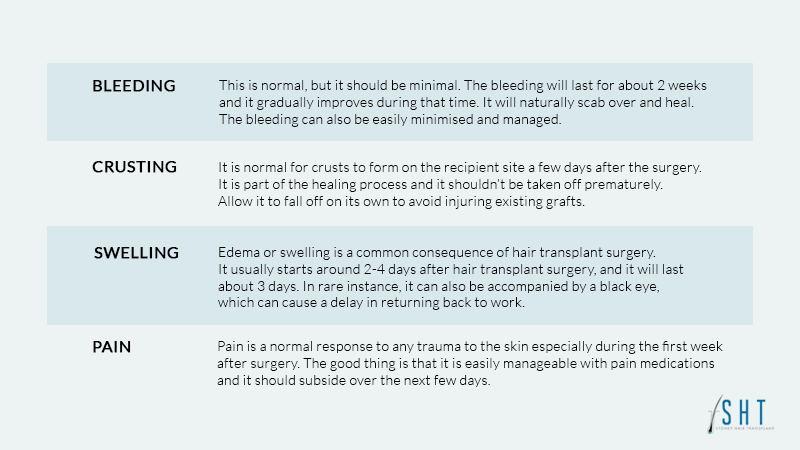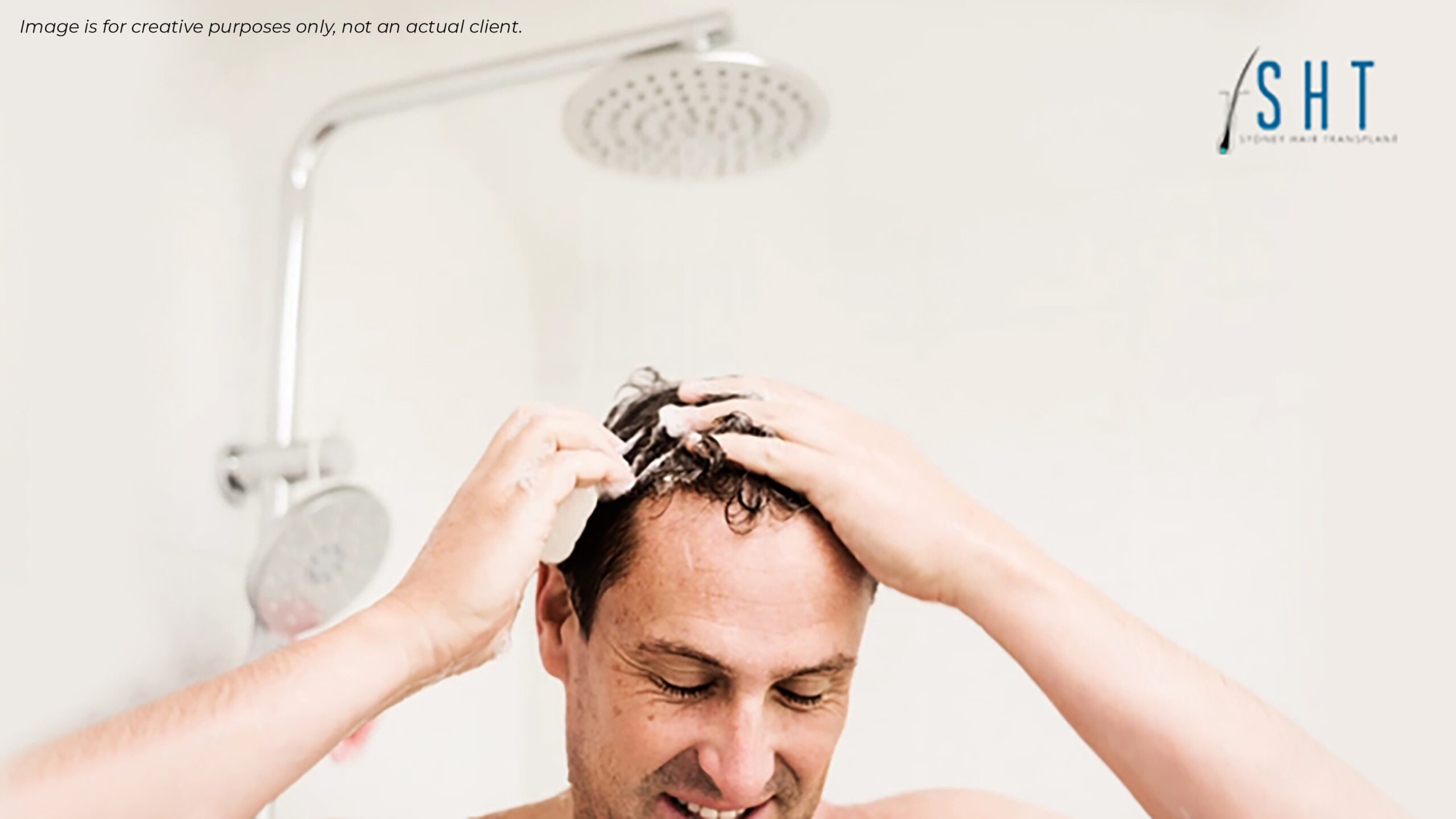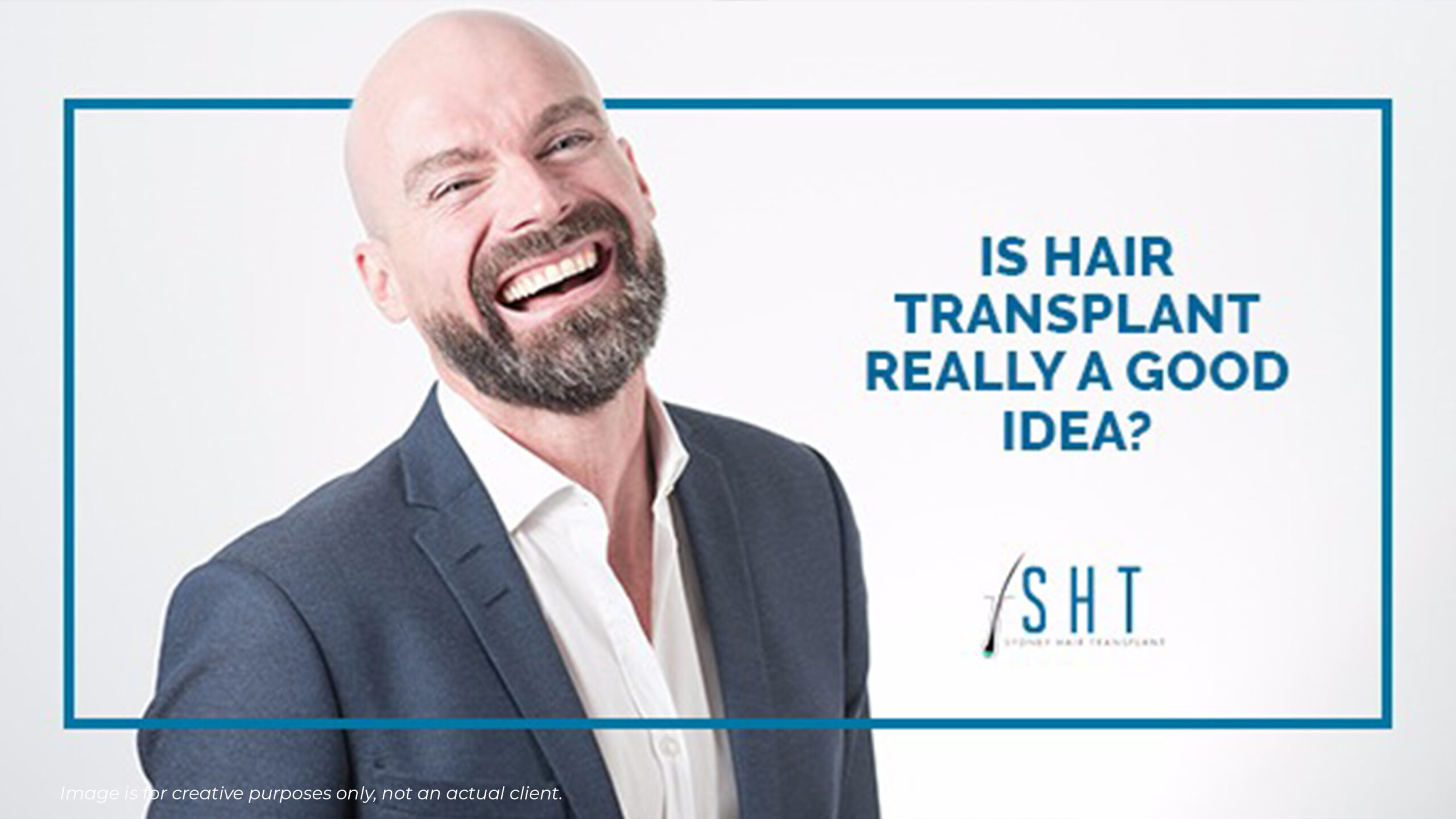Posted Last updated on
The final stretch is a critical time in achieving your desired results. At this point, the ball is in your court and you play a significant part in making sure that you are setting yourself up for surgical success. To help you sway things in that direction, here are hair transplant aftercare tips to get you started.
Normal Things to Expect
Before anything else, it is important that you know what you will normally expect after surgery. While it may not always look and feel pleasing, these are body reactions you can expect.
General Hair Care Instructions
While you care for your hair in its initial stages of healing, it is important that you remember these quick and simple reminders.
On washing and grooming your hair
Some surgeons allow gentle hair washing on the day after surgery. However, extra care should be given to avoid dislodging the grafts accidentally. Don’t let the stream of water from the shower hit your head directly to prevent dislodging the newly implanted grafts. To rinse the area, it’s better that you rinse it gently using a cup to slowly pour water over it. Dry the area by dabbing it with a soft towel, and comb it gently so as not to dislodge the grafts or disturb incisions.
On managing sutures
The sutures used during hair transplant are non-dissolvable, so careful aftercare measures must be taken until they can be removed. If in any case the sutures get dislodged prematurely, avoid puttling it out and just allow it to fall by itself. Just wait for the incision to close until it’s time to take them off, usually around the second week after surgery.
On avoiding habits that may compromise healing
Alcohol and cigarettes are some of the components that hamper healing. Avoid them for at least 4 weeks before and after surgery. Both interfere with wound healing, it counteracts the effects of your medications, and may even increase your risk for complications such as bleeding. It is also advised that you control your caffeine fix to 2 cups a day because even your favorite grind may increase bleeding tendencies.
Important Points on Hair Transplant Surgery Aftercare
Now, we go into details about the usual concerns that have a significant bearing on your healing process.
Pain Control
Pain is a subjective experience, but this is an expected sensation during the first 2 nights following surgery. To alleviate any discomfort on the surgical sites involved, you can always take the pain medication prescribed by your doctor. This should control your discomfort, allowing you to rest and heal better.
Medications prescribed may include:
- Acetaminophen – over-the-counter pain medications to treat mild to moderate pain (ex. Tylenol)
- Non-Steroidal Anti-Inflammatory Drugs (NSAIDS) – over-the-counter medications to treat mild to moderate pain (ex. Ibuprofen, Naproxen)
- Opioids – for moderate to severe pain
In any case that the pain increases in intensity days after your procedure, report this to your surgeon. Pain can be a sign of infection, especially if there is redness in the area, warm to the touch, or if you develop a fever.
Wound Care
Proper wound care is essential for effective wound healing on the donor and recipient sites. Hair transplantation is treated much like any other post-surgical wound. It involves days of head dressings, punch grafts healing, and antibiotic therapy. How you manage these affects the way your wound heals, which is critical especially among FUT (Follicular Unit Transplantation) patients.
Donor Area
The wound at the donor area requires additional collagen formation for it to heal. Eating the right foods, a potent supplement, and proper hydration can help boost your natural collagen.
If a tricophytic closure is used, healing at the donor site will be a combination of full thickness and partial thickness wounds. This needs proper moisture balance to optimize healing and reduction of tension to reduce scarring.
Furthermore, the importance of cleansing the back of the scalp – or the donor area – cannot be emphasized enough. You need to soak the area with water for one minute. Unless it is contraindicated by the surgeon, you can massage the donor area with shampoo using the pads of your fingers. Just let the water gently stream over the back of your head and prevent it from directly hitting the top of your scalp where the new grafts are implanted.
Recipient Site
The recipient site heals faster than the donor area due to the small size of the incisions created. Good moisture balance is also necessary to maintain optimal healing. While some think that Vaseline is adequate in providing moisture, some prefer to use medicated ointments.
Washing the new grafts must be done very gently. Surgeons suggest that you should not touch the grafts for the first week. You can prepare soapy water over the area. To prepare this you can dissolve a teaspoon of shampoo to a pitcher of water and pour it gently over the new grafts for 20 seconds. Rinse it for a good 20 seconds as well. Avoid doing it for too long or the grafts may absorb water and “pop up.”
After the first week, you can already start to work on loosening the crusts. Remember that excessive crust formation is also linked to potential infections. To carefully loosen these, you may place a bit of baby oil and gently rub it with the pads of your fingers. Follow it up with shampoo or a soapy solution before rinsing it with water. Never use fingernails to pick off the scabs as this can lead to scarring. Shampooing every day can help loosen the scabs until these are ready to fall off.
Every surgeon has their own post-surgical care instructions, but regardless of what they are it must be followed to the dot. Also remember that while some of the factors for wound healing is under the patient’s direct control, much of it is not. As a matter of fact, a large portion of wound healing has much to do with the surgeon’s techniques and the patient’s biological makeup. However, using the right techniques helps sway things in the right direction.
Antibiotics
There are some disputes among doctors regarding the use of antibiotics after hair transplant surgery. In most cases, doctors prescribe preventative antibiotics (prophylactic treatment), but some believe that there is no need for it at all. They believe that it is only necessary to provide antibiotic treatment only if there is already an infection present.
However, some doctors prefer that they give the medication right after treatment. This is to avoid any potential cause of infection.
Work and Exercise
You are to refrain from any strenuous activities during the first week after surgery. Minimal activity is recommended for the first 12 hours. It is also important to avoid excessive head movements and bending over during the first 24 hours. This is to prevent undue stress on the surgical site especially when it is still highly vulnerable. Some people may return to light work the day after surgery, but some may prefer to take at least 2-4 days off from work. However, due to physical signs of healing such as swelling and crusting, some patients opt to take a week off.
Follow-Up Check-Up
The follow-up check-up is an important step because this is a way for your surgeon to monitor your progress. You will also be set an appointment for suture removal around 2-3 weeks after surgery. Depending on your surgeon, there will a number of follow-up visits within the first year after your surgery.
What You need to Do About Potential Adverse Reactions:
Bleeding
You may expect bleeding to occur the night after surgery and a few days after that. This may stop if firm pressure is applied on the area for 15 minutes. You can press it firmly but gently to prevent dislodging any surrounding grafts.
If you are unable to control the bleeding with rest and gentle pressure, inform your surgeon right away. Persistent bleeding is a sign that your surgical site is not healing as it should be.
Swelling
Swelling is an inflammatory response of the body to the slight trauma created by the surgery. It usually occurs on the forehead around day 2-4 after the procedure. The swelling may descend to the eyelids due to gravity. However, this should be no cause for worry because it will not leave any permanent problems.
You can significantly reduce swelling if you sleep with your head elevated at 45 degrees for at least 3 nights. To do this you may prop up your head on two pillows or use a recliner.
Normally, swelling would subside by itself within a couple of days. Therefore, any prolonged swelling, especially if it is accompanied by pain or if it is warm to the touch, may be a sign of infection.
Infection
The risk for infection is present in any surgical procedure. While it may be rare in hair transplants, the likelihood of it happening cannot be eliminated.
The telltale signs of infection may include redness, discomfort, swelling, or bleeding. This implies that the surgical site is compromised.
To prevent infection after hair transplant surgery you can follow these tips:
- Avoid touching the surgical site (donor and recipient areas)
- Do not pick on the scabs as they heal, allow them to fall off by itself
- Follow post-op care instructions carefully
- Avoid smoking and alcoholic beverages during recovery
- Make sure that you attend follow-up visits as scheduled by your surgeons
If you think you show any signs of an infection, immediately report it to your doctor so that prompt treatment can be given.
Remember that these are just general information which you can use during your consultation to ask the right questions. You are more than welcome to ask us your questions or concerns. Book your consultation with Dr. Daood today.
Book your Private Consultation
If you are considering FUE or FUT Hair Transplant surgery please contact us for further information on pricing and procedural information.
To book a private consultation today with Dr. Daood call 1300 656 236.









